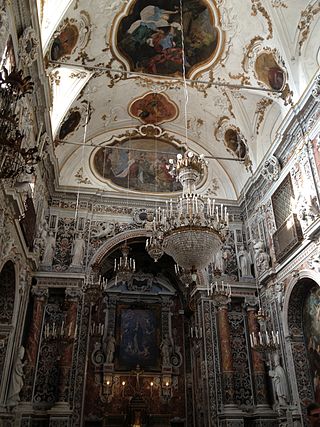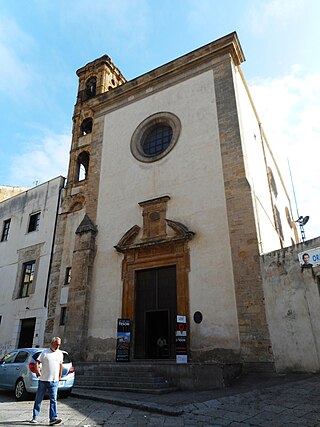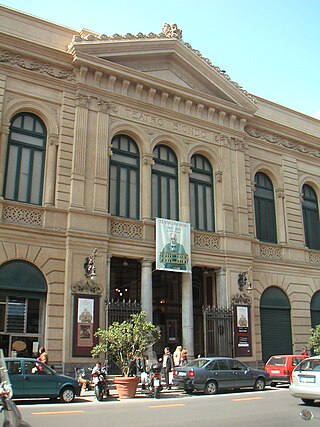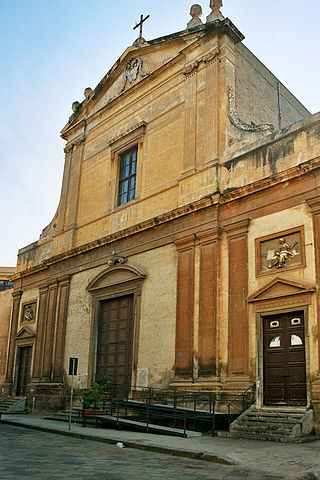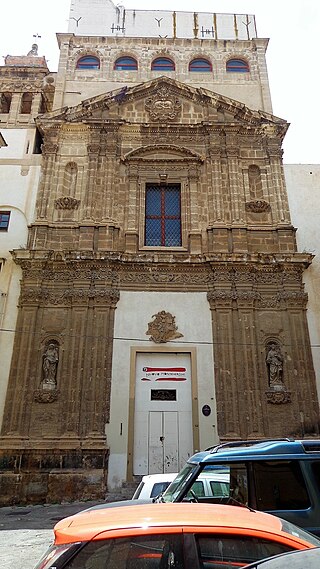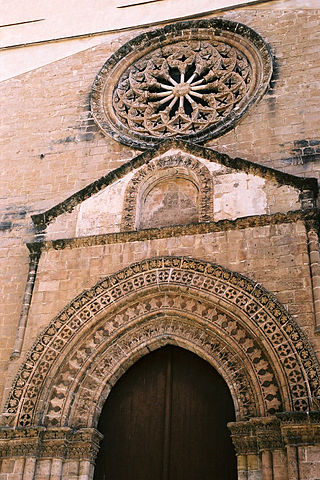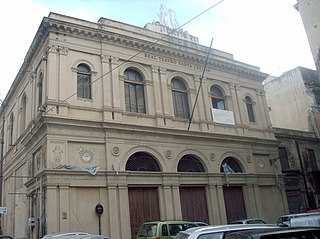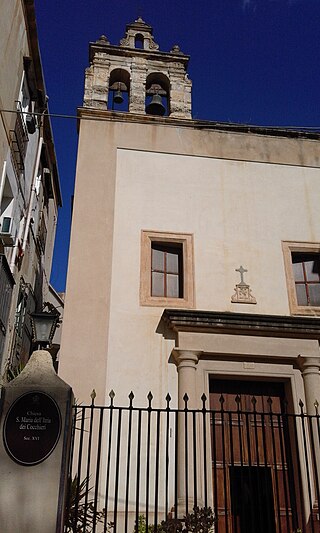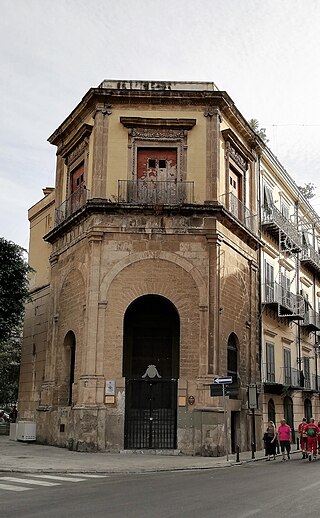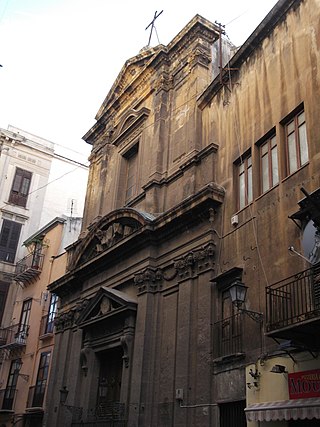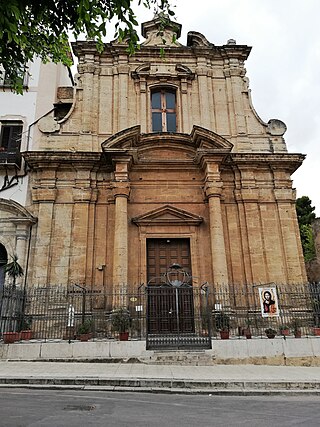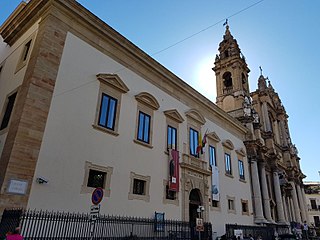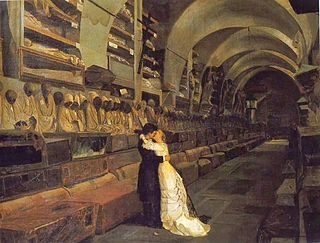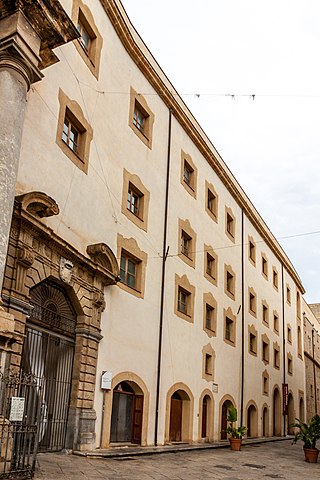69 Sights in Palermo, Italy (with Map and Images)
Legend
Premium Sights
Book tickets, guided tours and activities in Palermo.
Guided Free Walking Tours
Book free guided walking tours in Palermo.
Welcome to your journey through the most beautiful sights in Palermo, Italy! Whether you want to discover the city's historical treasures or experience its modern highlights, you'll find everything your heart desires here. Be inspired by our selection and plan your unforgettable adventure in Palermo. Dive into the diversity of this fascinating city and discover everything it has to offer.
Sightseeing Tours in PalermoActivities in Palermo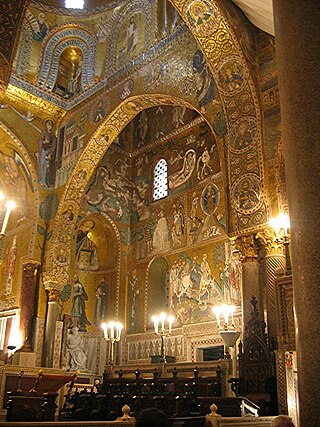
The Palatine Chapel is the royal chapel of the Norman Palace in Palermo, Sicily. This building is a mixture of Byzantine, Norman and Fatimid architectural styles, showing the tricultural state of Sicily during the 12th century after Roger I and Robert Guiscard conquered the island.
2. Aereo Lockheed F104-S (Starfighter)
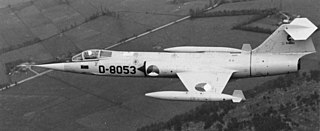
The Lockheed F-104 Starfighter is an American single-engine, supersonic interceptor which was extensively deployed as a fighter-bomber during the Cold War. Created as a day fighter by Lockheed as one of the "Century Series" of fighter aircraft for the United States Air Force (USAF), it was developed into an all-weather multirole aircraft in the early 1960s and produced by several other nations, seeing widespread service outside the United States.
3. Teatro Massimo Vittorio Emanuele
The Teatro Massimo Vittorio Emanuele is an opera house and opera company located on the Piazza Verdi in Palermo, Sicily. It was dedicated to King Victor Emanuel II. It is the biggest in Italy, and one of the largest of Europe, renowned for its perfect acoustics.
4. Church of Santa Maria dell’Ammiraglio
The Church of St. Mary of the Admiral, also called Martorana, is the seat of the Parish of San Nicolò dei Greci, overlooking the Piazza Bellini, next to the Norman church of San Cataldo and facing the Baroque church of Santa Caterina, in Palermo, Italy.
5. Palermo Cathedral
Palermo Cathedral is the cathedral church of the Roman Catholic Archdiocese of Palermo, located in Palermo, Sicily, southern Italy. It is dedicated to the Assumption of the Virgin Mary. As an architectural complex, it is characterized by the presence of different styles, due to a long history of additions, alterations and restorations, the last of which occurred in the 18th century.
6. Museo d'Arte Contemporanea della Sicilia
Palazzo Belmonte Riso is a historic building in Palermo, dating back to the eighteenth century, located at number 365 of Corso Vittorio Emanuele. The spaces of the palace house the collections of the Museum of Contemporary Art of Sicily, also known as RISO.
7. Orto Botanico
The Orto Botanico di Palermo is both a botanical garden and a research and educational institution of the Department of Botany of the University of Palermo. The garden lies within the city of Palermo, Italy at 10 m (33 ft) above sea-level. It covers about 0.12 km2 on top of red soil that has evolved on a limestone tuff substratum.
8. Museo del Risorgimento Vittorio Emanuele Orlando
The Museum of the Risorgimento is an exhibition space in Palermo dedicated to the Risorgimento. The exhibition deals with themes related above all to the Sicilian revolution of 1848 and the phases of the expedition of the Thousand that took place in Sicily. It is named after Vittorio Emanuele Orlando.
9. Genio del Garraffo
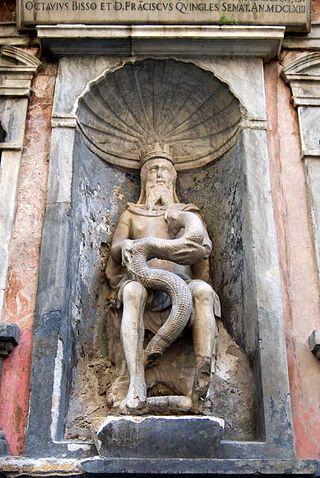
The Genius of Garraffo, also known as the Genius of Palermo al Garraffo, or in Sicilian Palermu lu Grandi, is a marble sculpture of the late fifteenth century, and is part of a sculptural group placed in a seventeenth-century aedicule, in Piazzetta del Garraffo, in the Vucciria market, in Palermo.
10. Museo di Zoologia Doderlein
The "Pietro Doderlein" museum is a university museum of Zoology in Palermo. It is the most important zoological museum in Sicily and is dedicated to Professor Pietro Doderlein, who founded it in 1863.
11. Church of San Cataldo
The Church of San Cataldo is a Catholic church located at Piazza Bellini, in central Palermo, Sicily, Italy. Erected in 1154 as a notable example of the Arab-Norman architecture which flourished in Sicily under Norman rule on the island, the church is annexed to that of Santa Maria dell'Ammiraglio. Since the 1930s, it belongs to the Order of the Holy Sepulchre.
12. Arsenale della Real Marina
The Arsenal of the Royal Navy of Palermo was a maritime arsenal, from 1630 to 1943. It is based in Via dell'Arsenale, in an area overlooking the city's Shipyards. The monument was reopened in 1997 as a museum space.
Wikipedia: Arsenale di Palermo - Museo del mare (IT), Website
13. Church of San Giovanni degli Eremiti
San Giovanni degli Eremiti is an ancient former monastic church located on Via Benedettini #19 in the ancient quarter of Albergaria of the city of Palermo, region of Sicily, Italy. It is about two blocks south from the Palazzo dei Normanni, adjacent to the church of San Giorgio in Kemonia. While the interior is virtually devoid of decoration or furnishings, the red Norman-Byzantine domes, the medieval cloister ruins, and garden make this small church a symbol of ancient Palermo.
14. Chiesa del Gesù (Casa Professa)
The Church of the Gesù, known also as the Saint Mary of Jesus or the Casa Professa, is a Baroque-style, Roman Catholic church established under the patronage of the Jesuit order, and located at Piazza Casa Professa 21 in Palermo, region of Sicily, Italy.
15. Aereo Fiat G59 4B
The Fiat G.59 was a single-engine monoplane cantilevered monoplane trainer aircraft developed by the Italian aeronautical company Fiat Aviazione in the post-war period, designed by engineer Giuseppe Gabrielli and derived from the earlier G.55 Centauro and G.56.
16. Tonnara Florio
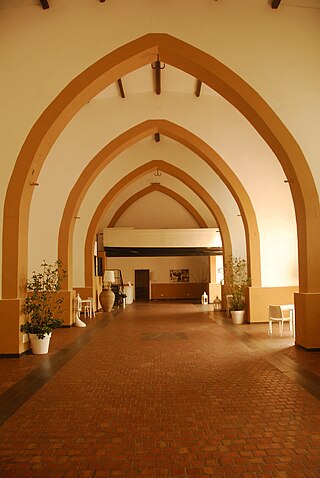
The Tonnara Florio is a former tuna fishery built by the Florio family located in the Arenella district of Palermo. In the architectural complex there is also the Palazzina dei Quattro Pizzi dei Florio.
17. Museo Regionale della Fotografia
The Favaloro-Di Stefano villa, located in Piazza Virgilio in Palermo, was built between 1889 and 1891, designed by the architect Giovan Battista Filippo Basile and was completed by his son Ernesto between 1913 and 1914. It belonged first to the Favaloro family and later to Senator Giuseppe Di Stefano Napolitani, a politician and lawyer from Palermo.
18. Chiesa di Santa Caterina
Santa Caterina d'Alessandria or Saint Catherine of Alexandria is a Roman Catholic church with a main facade on Piazza Bellini, and a lateral Western facade facing the elaborate Fontana Pretoria, in the historic quarter of Kalsa in the city of Palermo, region of Sicily, Italy. In front of the main facade, across the piazza Bellini, rise the older churches of San Cataldo and Santa Maria dell'Ammiraglio, while across Piazza Pretoria is the Theatine church of San Giuseppe and the entrance to the Quattro Canti. Refurbished over the centuries, the church retains elements and decorations from the Renaissance, Baroque, and late-Baroque (Rococo) eras. This church is distinct from the Oratorio di Santa Caterina found in the Olivella neighborhood.
19. Chiesa di San Giuseppe dei Teatini
San Giuseppe dei Teatini is a Roman Catholic church on via Vittorio Emanuele, at the southwest corner of the Quattro Canti, in the historic center of the city of Palermo, region of Sicily, Italy. The east flank of the nave faces the Fontana Pretoria, across the piazza from Santa Caterina. San Giuseppe is an example of the Sicilian Baroque in Palermo.
20. Necropoli punica
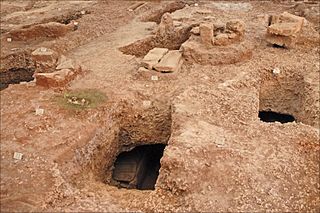
The Punic necropolis of Palermo is a necropolis dating back to the Punic-Roman period. It is located in the western part of the city and the part that can be visited is located under the Tukory barracks, between Piazza Indipendenza, Corso Pisani, Via Cuba, Via Pindemonte and Via Danisinni.
21. Chiesa di San Domenico
San Domenico is a Baroque-style Roman Catholic church, located on Piazza San Domenico, and located in the ancient quarter of La Loggia, in central Palermo, region of Sicily, Italy. Piazza San Domenico opens to Via Roma a few blocks south of the large Palazzo delle Poste, and a few blocks north of Sant'Antonio Abate and Teatro Biondo, is the northern border of the warren of alleys of the Vucciria neighborhood. The church houses the burial monuments of many notable Sicilians, and is known thus as the Pantheon of illustrious Sicilians.
22. ricordo della strage di via Carini
The Via Carini massacre was a Cosa Nostra attack in which, on September 3, 1982, in the Palermo's via Isidoro Carini, the prefect of Palermo Carlo Alberto Dalla Chiesa, his wife Emanuela Setti Carraro and the escort police officer Domenico Russo were murdered.
23. Museo dell'Osservatorio Astronomico
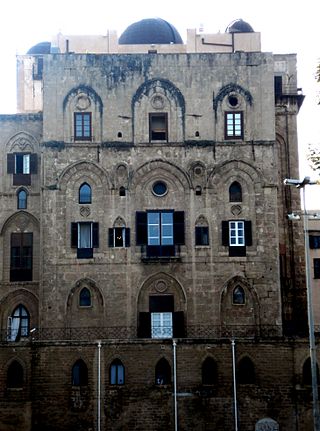
The Giuseppe S. Vaiana Astronomical Observatory is an astronomical observatory located in Palermo, Sicily, Italy, housed inside the Palazzo dei Normanni. It is one of the research facilities of the National Institute of Astrophysics. The observatory carries out research projects in the field of astronomy and astrophysics including the study of solar and stellar coronas, stellar evolution and of the supernova remnants.
24. Giardino dei Giusti
The Garden of the Righteous is a public garden in Palermo, which was among the degraded spaces of the historic center recovered by the municipal administration in the years 1999-2000. The project curated by architects Mario Li Castri and Giuseppe Prestigiacomo, refers to the xirbe of the twelfth and thirteenth centuries, small gardens of a productive and ornamental nature, obtained in the abandoned areas of urban construction, surrounded by walls inside courtyards. It is located in the center, and overlooks a street of significant importance for the historic center of the city: Via Alloro.
25. Castello a Mare
Castello a Mare or Castellammare is an ancient fortress that guarded the entrance to the port at Palermo in La Cala. Extensive remains are visible, some of which are open to the public. There is a Norman keep, a fortified gate or entrance, and remains of a sophisticated Renaissance star-shaped defence.
26. Genio del Porto
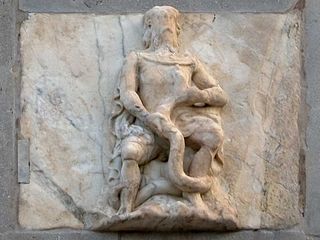
The Genius of the Port, also known as the Genius of the Pier, the Genius of Palermo at the Port or the Genius of the Merily Stone, is an ancient marble high-relief inserted at the end of the sixteenth century in a memorial stone that since 2000 has been located at the entrance of Via Emerico Amari, inside the Port of Palermo.
27. Chiesa di Santa Maria della Catena
Santa Maria della Catena is a Roman Catholic church located in the Piazza Dogana, now sandwiched between Strada Statale 113 and Via Vittorio Emanuele, located in the harbor-hugging quarter of Castellammare in Palermo, region of Sicily, Italy.
28. Chiesa di San Gioacchino
The church of San Gioacchino all'Olivella is a place of worship located in the historic center of Palermo. Church dedicated to San Gioacchino, it is located in the Olivella district, from which it takes its name, on the corner of Via San Basilio and Via Patania.
29. Parrocchia Santissima Trinità - Basilica la Magione
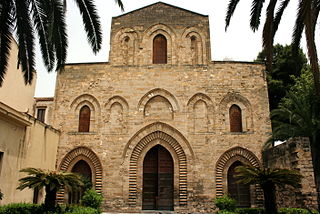
La Magione is a 12th-century Norman-Gothic architecture, Roman Catholic Basilica church, located on Via Magione #44, the entrance to the facade, which faces southeast, is through a garden path midway between via Castrofilippo and Via Giuseppe Garibaldi, in the ancient quarter of Kalsa of Palermo, region of Sicily, Italy. The apse of the church is on the southeast corner of Piazza Magione.
30. Chiesa di San Francesco Saverio
The Church of Saint Francis Xavier is a Baroque church of Palermo. It is located on the Street of the same name in the quarter of the Albergaria, within the historic centre of Palermo. The building is considered the masterpiece of the Jesuit architect Angelo Italia.
31. Chiesa di Santa Teresa alla Kalsa
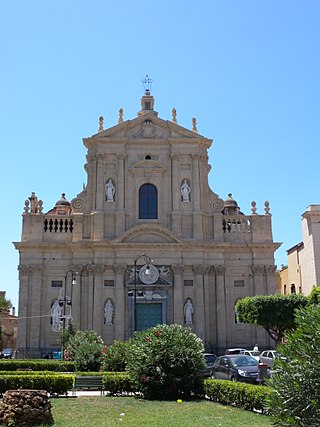
The Church of Saint Teresa is a Baroque Roman Catholic church, located on Piazza della Kalsa, facing the Porta de Greci in the ancient quarter of the Kalsa of the city of Palermo, region of Sicily, Italy.
32. Pretoria Fountain
The Praetorian Fountain is a monumental fountain located in Piazza Pretoria in the historic center of Palermo, region of Sicily, Italy. The fountain dominates the piazza on the west flank of the church of Santa Caterina, and is one block south of the intersection of the Quattro Canti. The fountain was originally built in 1544 in Florence by Francesco Camilliani, but was sold, transferred, and reassembled in Palermo in 1574.
33. Chiesa di San Giovanni dei Lebbrosi
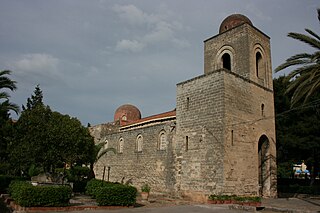
San Giovanni dei Lebbrosi is an ancient church in Palermo, Sicily. While built by the Norman rulers, the architecture has strong Arabic influences. The church in 1119 was attached to a leprosarium, hence the title. The church was dedicated to St John the Baptist. The adjacent hospital no longer exists.
34. Chiesa del Santissimo Salvatore
The Church of Most Holy Saviour is a Baroque-style, Roman Catholic church in Palermo, Italy. It is located at #396 of the ancient main street of Palermo, the Cassaro, presently Via Vittorio Emanuele, in the ancient Albergaria quarter.
35. Archivio Storico Comunale
The Municipal Historical Archive of Palermo is a building that preserves the archives of the municipal administration of Palermo, which contain documents from the end of the thirteenth century until 1957.
36. Chiesa di San Giorgio dei Genovesi
Saint George of the Genoese is a Renaissance-style, Roman Catholic church located near the port of La Cala, on Via Buon Pastore in the ancient quarter of the Loggia, in Palermo, region of Sicily, Italy.
37. Chiesa di Sant'Orsola
The Church of Saint Ursula of the Blacks is a Baroque-style, Roman Catholic church located in the central Via Maqueda #110, adjacent to the Palazzo Comitini, in the quarter of the Albergaria, within the historic centre of Palermo, Region of Sicily, Italy.
38. Porta Nuova
Porta Nuova is a monumental city gate of Palermo. It represents the entrance of the Cassaro from Corso Calatafimi and is located beside Palazzo dei Normanni, royal palace of Palermo. The gate was built to celebrate Charles V's conquest of Tunis (1535) and his visit to the capital of the Kingdom of Sicily.
39. Palazzina Cinese
The Chinese Palace, also known as Real Casina alla Cinese, is a former royal residence of the House of Bourbon-Two Sicilies designed in the style of Chinoiserie. It is located in Palermo, inside the park of La Favorita. The Ethnographic Museum of Sicily, named after Giuseppe Pitrè, is located in one of the Palace's guesthouse.
40. Basilica di San Francesco d'Assisi
The Church of Saint Francis of Assisi is a Gothic-style, Roman Catholic church of Palermo. It is located near a major and ancient street of the city, via Cassaro, in the quarter of the Kalsa, within the historic centre of Palermo. The building represents the main Conventual Franciscan church of Sicily, and has the title of minor basilica.
41. Torre del rotolo
The Tower of Fra Giovanni or Torre del Rotolo or Ruotolo is located on Punta Rotolo, between Addaura and Vergine Maria, on Lungomare Cristoforo Colombo n. 1624 in the locality of Vergine Maria, a seaside village of Palermo.
42. Chiesa di Sant'Anna la Misericordia
The Church of Saint Anne the Mercy is a Baroque church of Palermo. It is located in the area of the ancient market of Lattarini, in the quarter of the Kalsa, within the historic centre of Palermo. The church is kept by the Third Order Regular of St. Francis of Penance.
43. Chiesa di Santa Ninfa dei Crociferi
The Church of Saint Nympha is a Baroque-Mannerist church of Palermo. The facade rises on Via Maqueda, a block north of the central intersection known as the Quattro Canti, in the quarter of Seralcadi, within the historic centre of Palermo. The church belongs to the Camillians.
44. Chiesa di Santa Maria degli Angeli - La Gancia
Santa Maria della Gancia, also known as Santa Maria degli Angeli, is a 15th-century Roman Catholic church, adjacent to a convent, located on Via Alloro #27 in central Palermo, region of Sicily, Italy.
45. Oratorio del Rosario di Santa Cita
The Oratorio del Rosario di Santa Cita is a Baroque chapel or prayer room located in the quarter of the Castellamare within the historic center of Palermo, region of Sicily, Italy. The site is best known for the remarkable stucco tableaux scenes composed during 1687-1718 by Giacomo Serpotta.
46. Casa Florio - Palazzina dei Quattro Pizzi
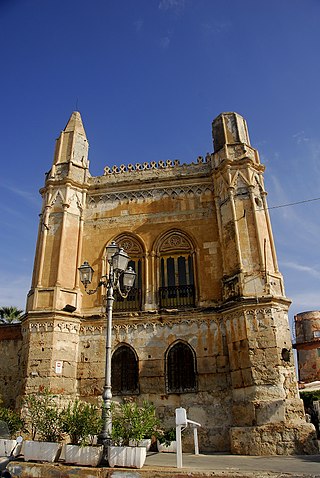
The Palazzina dei Quattro Pizzi is located in the Arenella district of Palermo, in the area of the former Tonnara Florio. Built in neo-Gothic style, it became the private home of Vincenzo Florio who retired there with his family.
47. Colonna dell'Immacolata
The Colonna dell'Immacolata Concezione is a monumental sculpture, whose centerpiece is a bronze statue of the Virgin of the Immaculate Conception atop a column, erected in 1631 on Piazza San Domenico in Palermo, Sicily. The monument, which stands in front of the church of San Domenico is also referred to as the Colonna di San Domenico or Monumento all'Immacolata. The 18th-century monument falls within the tradition for example, of the guglia or spire monuments common to Naples.
48. Castello Utveggio
The Castello Utveggio is a monumental palace built between 1928 and 1933 on a promontory of Mount Pellegrino overlooking Palermo, Sicily. It was built in a Neogothic style resembling a castle with crenellated rooflines.
49. Chiesa di San Matteo al Cassaro
The Church of Saint Matthew is a Baroque-style, Roman Catholic church of Palermo, region of Sicily, Italy. It is located in the main street of the city, the ancient Cassaro now Corso Vittorio Emanuele, in the quarter of the Loggia, about a block east of the Quattro Canti, within the historic centre of Palermo.
50. Politeama Garibaldi
The Politeama Theatre is a theatre of Palermo. It is located in the central Piazza Ruggero Settimo and represents the second most important theatre of the city after the Teatro Massimo. It houses the Orchestra Sinfonica Siciliana.
51. Santuario di Santa Rosalia
The Sanctuary of Santa Rosalia is a church and pilgrimage site located on via Bonnaojust outside of the urban neighborhoods of Palermo, nestled against a stone cliff wall on Mount Pellegrino, which looms to the north of the Sicily city. On 15 July 1624, putative relics of this 12th century saint were discovered in a cave at the site, and since the plague ebbed after these bones were paraded through town, Saint Rosalia was adopted as the fourth female patron saint of Palermo, and this sanctuary was erected in her honor.
52. Admiral’s Bridge
The Admiral's Bridge is a medieval bridge of Palermo, located in Piazza Scaffa. It was built over the Oreto River during the era of the Norman Sicily by the ammiratus ammiratorum George of Antioch. In 2015, it became a UNESCO World Heritage Site as part of a series of nine civil and religious structures inscribed as Arab-Norman Palermo and the Cathedral Churches of Cefalù and Monreale.
53. Chiesa di San Nicolò da Tolentino (Palermo)
San Nicola da Tolentino, or more in non-dialect known as the church Saint Niccolò da Tolentino, is a Roman Catholic church located on via Maqueda #157, between via dei Calderai and via Giardinaccio, at the Southwest border of the quarter of Kalsa (Tribunali) of the historic centre of Palermo, region of Sicily, Italy.
54. Chiesa dell'Immacolata Concezione
The Church of the Immaculate Conception is a Baroque church of Palermo. It is located on the busy streets composing the markets of the Capo, in the quarter of the Seralcadio, within the historic centre of Palermo.
55. Chiesa di Santa Chiara
Santa Chiara all'Albergaria refers to a church and former monastery located in piazza Santa Chiara, in the quarter of Albergaria in the city of Palermo, region of Sicily, Italy. The church is located near the busy outdoor Ballarò marketplace.
56. Teatro Biondo
The Biondo Theatre is a neoclassical and Art Nouveau-style theater building located on Via Roma #258, corner with Via Venezia, in the ancient quarter of Castellamare of central Palermo, region of Sicily, Italy. Diagonally across Via Roma is the ancient church of Sant'Antonio Abate and a stairwell descending into the warrens of the Vucciria Market.
57. Chiesa di Santa Cita
Santa Cita, reconsecrated in 1952 as San Mamiliano, is a baroque-style, Roman Catholic parish church located on Via Squarcialupo, 1, in the quarter of Castellammare of the city of Palermo, Sicily, Italy. The church and its artworks suffered heavily the bombardment during the Second World War, but it still contains original works and is attached to the Oratory of the Rosary of Santa Cita and less than a block north of the church of Santa Maria di Valverde.
58. Castello di Maredolce
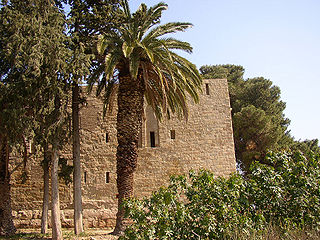
The Maredolce Castle, also called Favara Palace, is a medieval building of Palermo. During the Siculo-Norman age it represented one of the "Solatii Regii", pleasure palaces, of the Kings of Sicily. It is located within Favara Park, in the neighbourhood of Brancaccio.
59. Teatro Nuovo Montevergini
Santa Maria delle Grazie di Montevergine is a Baroque deconsecrated church in Palermo, region of Sicily, Italy. It is located on piazetta Montervergini. The church now functions as a theater: Teatro Nuovo Montevergini.
60. Chiesa di Sant'Agostino
The Church of Saint Augustine is a Gothic church of Palermo. It is located near the market of the Capo, in the quarter of the Seralcadio, within the historic centre of Palermo. The church is also called Santa Rita, because of the devotion to this Augustinian saint.
61. Teatro Santa Cecilia
The Teatro Santa Cecilia or Real Teatro di Santa Cecilia is a neoclassical-style theater building located on Piazza Teatro Santa Cecilia at the intersections with Via Cantavespri and Vicolo Guarnernara, in the ancient quarter of Kalsa of central Palermo, region of Sicily, Italy.
62. Chiesa Santa Maria Dell‘itria Dei Cocchieri
Santa Maria dell'Itria dei Cocchieri, also called Santa Maria dell'Itria alla Kalsa is a small, Rensissance-style, Roman Catholic church of Palermo. It is located on the Piazzetta dei Cocchieri, just off via Alloro, in the quarter of Kalsa (Tribunali) of the historic centre of Palermo. Across via Alloro is the small public pocket park of Giardino dei Giusti.
63. Chiesa di San Giovanni dei Napoletani
The San Giovanni dei Napoletani (English: St John of the Neapolitans is a late-Baroque or neoclassical church of Palermo. It is located in the quarter of Kalsa of the historic centre of Palermo. It is located diagonally in front of the church of Santa Maria della Catena.
64. Chiesa di Santa Maria degli Agonizzanti
Santa Maria degli Agonizzanti or Holy Mary of those in agony) is a Baroque-style, Roman Catholic church located on via Giovanni da Procida, just south of Via Roma, in central Palermo, region of Sicily, Italy. It is located in the quarter of the Kalsa, within the historic centre of Palermo.
65. Chiesa di San Giuseppe Cafasso
San Giorgio in Kemonia, some decades ago renamed as San Giuseppe Cafasso, is a Roman Catholic parish church located on Via dei Benedettini #13 in the city of Palermo, region of Sicily, Italy. In 1953, the church was rededicated to Joseph Cafasso (1811-1860), patron saint of prisoners, due to former nearby female prison. The apse of the ancient church of San Giovanni degli Eremiti ends on the right flank of the church. Across the street are a series of building forming the Giovanni di Cristina Children's Hospital.
66. Museo Archeologico Regionale Antonio Salinas
The Regional Archaeological Museum "Antonino Salinas" is a museum located in Palermo. It has one of the richest archaeological collections in Italy and evidence of Sicilian history in all its phases, ranging from prehistory to the Middle Ages. Inside are preserved the finds and artifacts of the peoples who have determined the history of the island: Phoenicians, Punics, Greeks, Romans and Byzantines, but also artifacts of other peoples such as the Egyptians and the Etruscans. The Palermo Stone is preserved there, an important testimony of the history of the Egyptian Old Kingdom.
Wikipedia: Museo archeologico regionale Antonio Salinas (IT), Website, Facebook
67. Catacombe dei Cappuccini
The Capuchin convent in Palermo, in the Cuba district, is annexed to the church of Santa Maria della Pace. The church and convent date back to the sixteenth century, although built on previous structures. In the basement are the famous Capuchin catacombs in Gothic style, so called but actually a cemetery and not a catacomb, that is, a place of worship and early Christian meeting.
Wikipedia: Catacombe dei Cappuccini (IT), Website, Telegram, Tripadvisor, Instagram
68. Il Genio di Palermo
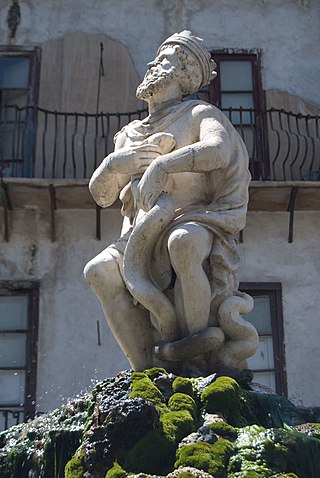
The Genius of Piazza Rivoluzione or Fountain of the Genius, formerly known as the Genius of the Pier or Genius of the Fieravecchia, is a sixteenth-century statue placed on a nineteenth-century fountain located in Piazza Rivoluzione, in the Fieravecchia district of Palermo.
69. Modern art gallery Empedocle Restivo
The Empedocle Restivo Gallery of Modern Art is a civic museum of modern art located in Via Sant'Anna, in the Kalsa district of the historic center of Palermo, which was born in 1910 in the premises of the Politeama Theater from the will of Empedocle Restivo, to whom it was dedicated.
Share
How likely are you to recommend us?
Disclaimer Please be aware of your surroundings and do not enter private property. We are not liable for any damages that occur during the tours.
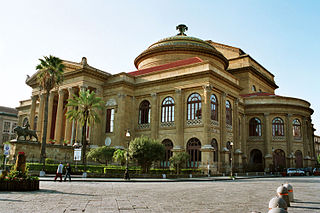
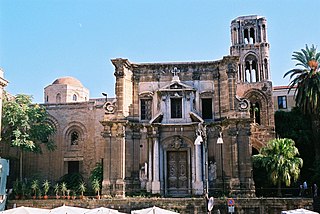
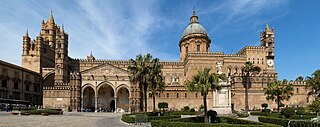
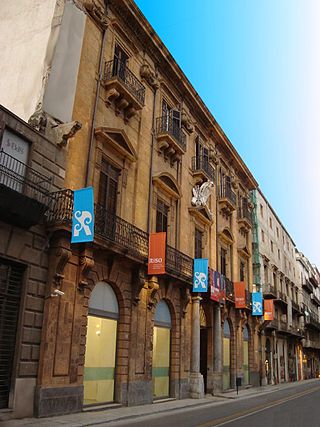
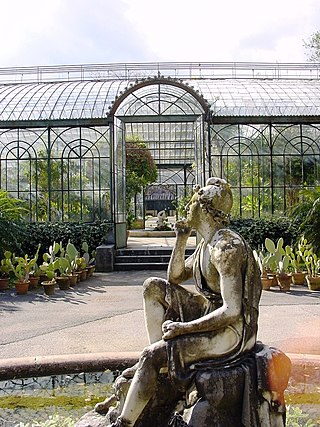
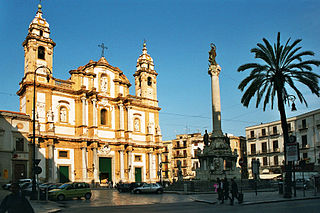
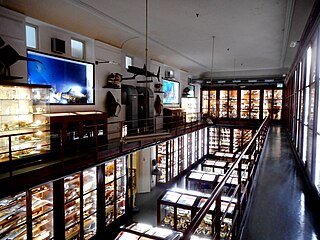
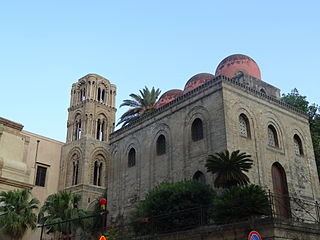
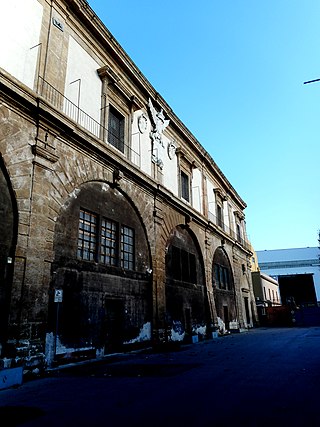
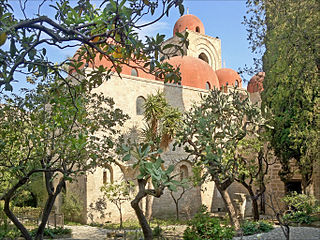
.jpg)
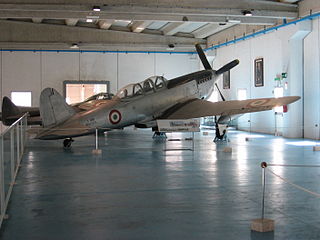
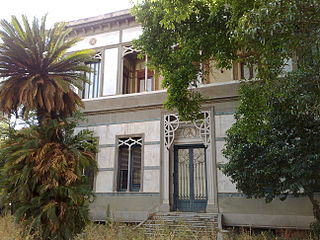
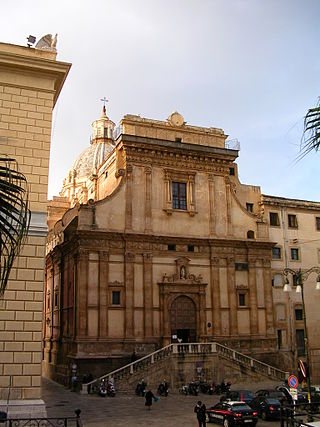
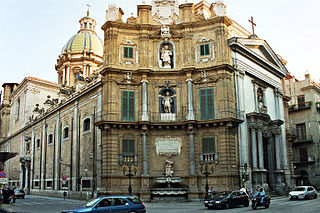
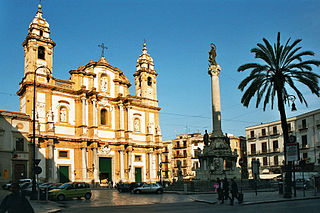
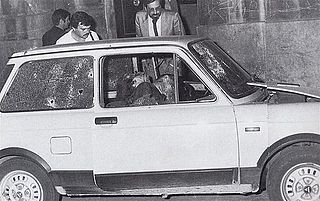
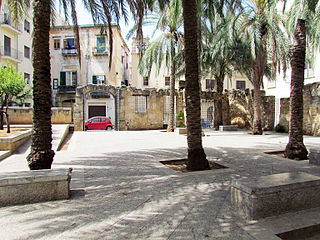
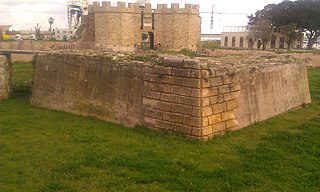
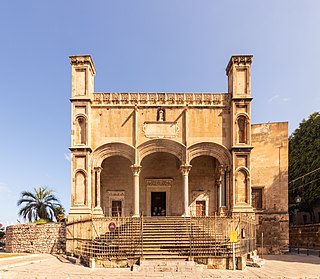
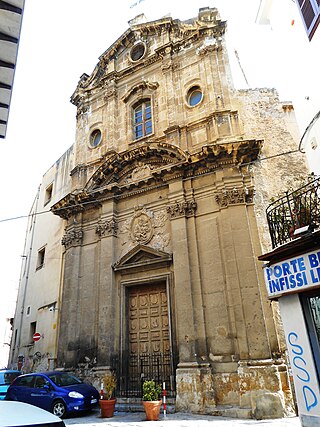
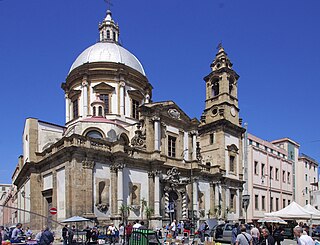
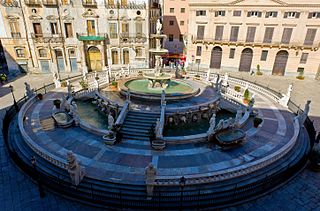
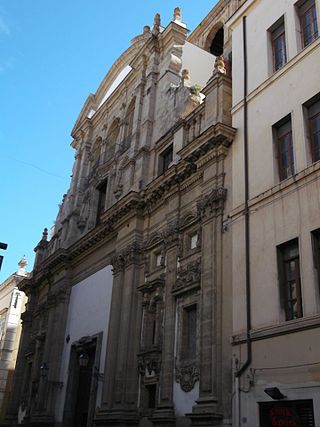
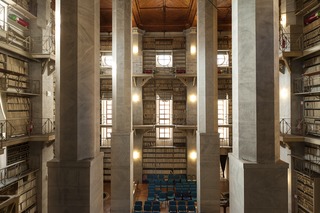
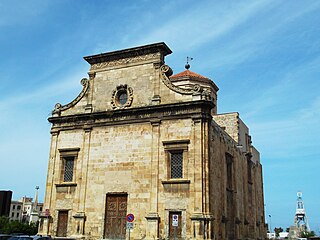
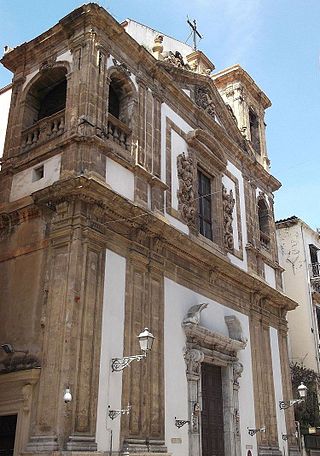
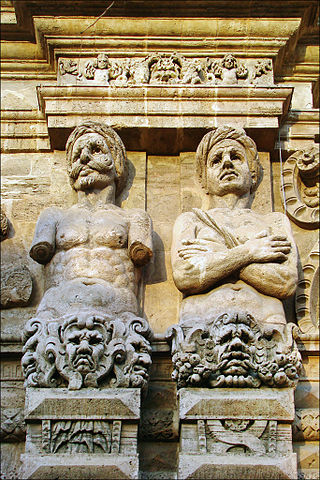
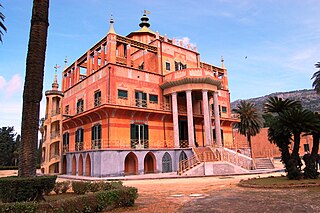
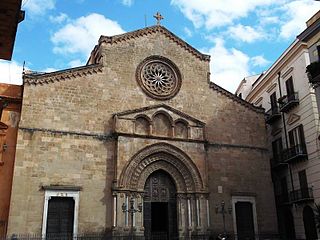
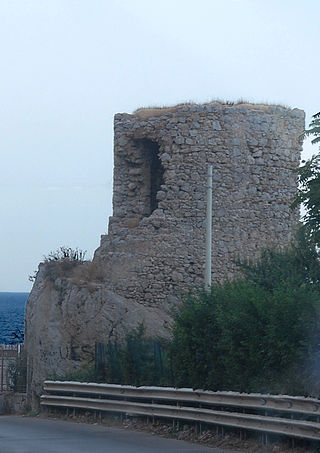
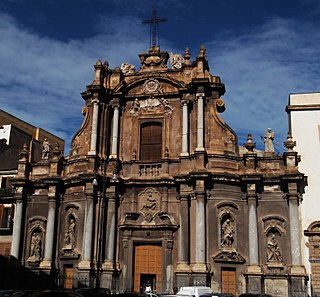
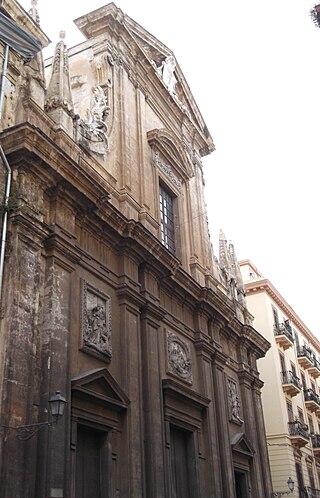
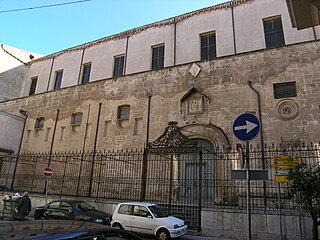
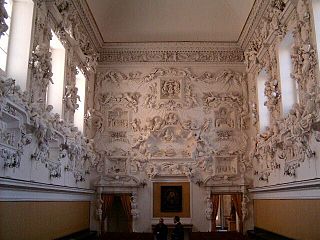
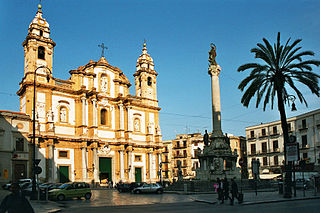
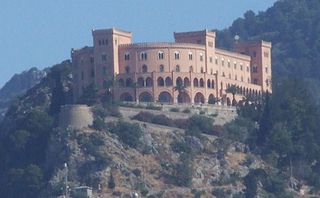
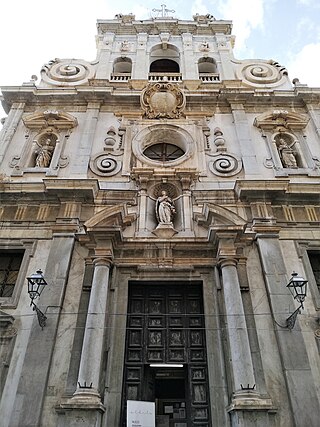
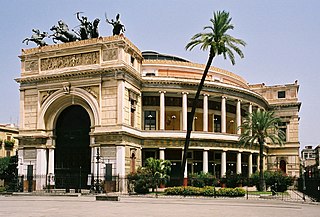

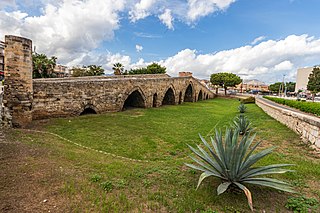
.jpg)
